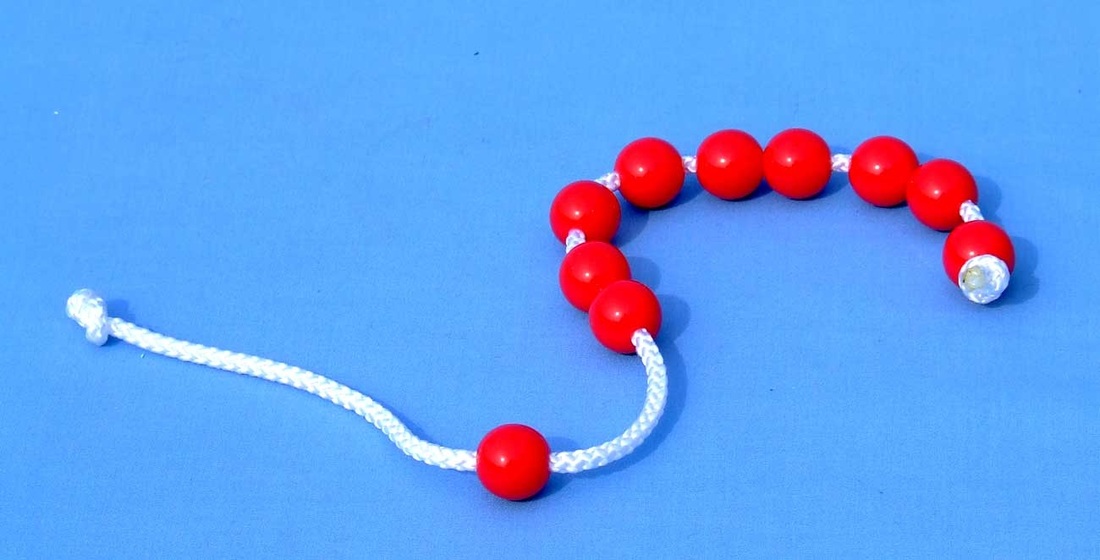What are Active Response Beads?
According to Intervention Central, "Active-Response Beads-Time Out is an intervention to replace in-class time-out that is easy to use". Many times when students act out or need a "cool down", they are often asked to leave a classroom. Active Response Beads are a way for students to stay in the classroom and still allow them to "cool down". The term "cool down" refers to when students are worked up for a particular reason and they just need a break so they can return back to learning. When students are asked to leave the classroom for their "cool down" they are often missing important instructional time. To make the beads ten 3/4 inch beads and a 15 inch cord is needed. With Active Response Beads the student takes the beads out of his or her desk or gets them from the teacher and uses them when they need it. Usually the teacher will let the students know when he or she needs to use the beads. As students become more comfortable with using them, students can learn to recognize when they need to use the beads. Here's how many students Active Response Beads in a classroom according to Intervention Central:
"The student puts head on desk and counts down slowly from 10 to 1. The student starts counting in an audible voice. With each number in the count, the student:
"The student puts head on desk and counts down slowly from 10 to 1. The student starts counting in an audible voice. With each number in the count, the student:
- takes a deep breath and slowly releases;
- moves a bead along the cord from the left to the right side of the ARB;
- gradually reduces voice volume--to conclude in a whisper on the last number.
Student Profile
In my kindergarten classroom, I have a student who becomes upset for a particular reason and tends to have a melt down. To calm him down, he usually needs to take a short walk out of the classroom. His triggers for his meltdowns are when he doesn't get picked on to answer a question or when he doesn't get chosen to be the line leader. With Active Response Beads, he will not lose valuable classroom time and is still doing something to actively "cool down". This student loves numbers and could count numbers all day long. These beads are something that the student might actually enjoy doing because it does involve numbers and counting.
In my kindergarten classroom, I have a student who becomes upset for a particular reason and tends to have a melt down. To calm him down, he usually needs to take a short walk out of the classroom. His triggers for his meltdowns are when he doesn't get picked on to answer a question or when he doesn't get chosen to be the line leader. With Active Response Beads, he will not lose valuable classroom time and is still doing something to actively "cool down". This student loves numbers and could count numbers all day long. These beads are something that the student might actually enjoy doing because it does involve numbers and counting.
Visual Representations
|
In this video, Jim Wright, the creator of the Intervention Central website, describes how to use Active Response Beads to promote behavioral self-control. Wright goes through the steps on how to use the Active Response Beads and the advantages of them.
|
If students do not like to use the actual beads, students can use desk dots. Desk dots are similar to Active Response Beads, but a student just place his or her finger on the dot and then precedes to count down from 10 to 1.
|
Content Area Examples
Active Response Beads will not change in between content areas. It can be used in math, reading, science and social studies. The student just needs somewhere to sit, preferably a desk, and the beads. However, if students move classrooms for a content area class it would be very beneficial if that teacher in the new classroom have a set of beads or if the student brings his or her own.
Physical Education and Music- For a physical education and music class using the Active Response Beads might be difficult because typically students are not at a desk. During these two classes students might not be able to use physical beads. Students should be given different "cool down" strategy to use. For example, in physical education class the student could possibly walk a lap around the gym while holding a ball and they could count backwards. Or the students can sit in an isolated area and use the beads without using a desk to rest his or her head on. Another possibility is for students to have the paper copy of the active response beads and complete the "cool down" that way.
Physical Education and Music- For a physical education and music class using the Active Response Beads might be difficult because typically students are not at a desk. During these two classes students might not be able to use physical beads. Students should be given different "cool down" strategy to use. For example, in physical education class the student could possibly walk a lap around the gym while holding a ball and they could count backwards. Or the students can sit in an isolated area and use the beads without using a desk to rest his or her head on. Another possibility is for students to have the paper copy of the active response beads and complete the "cool down" that way.



